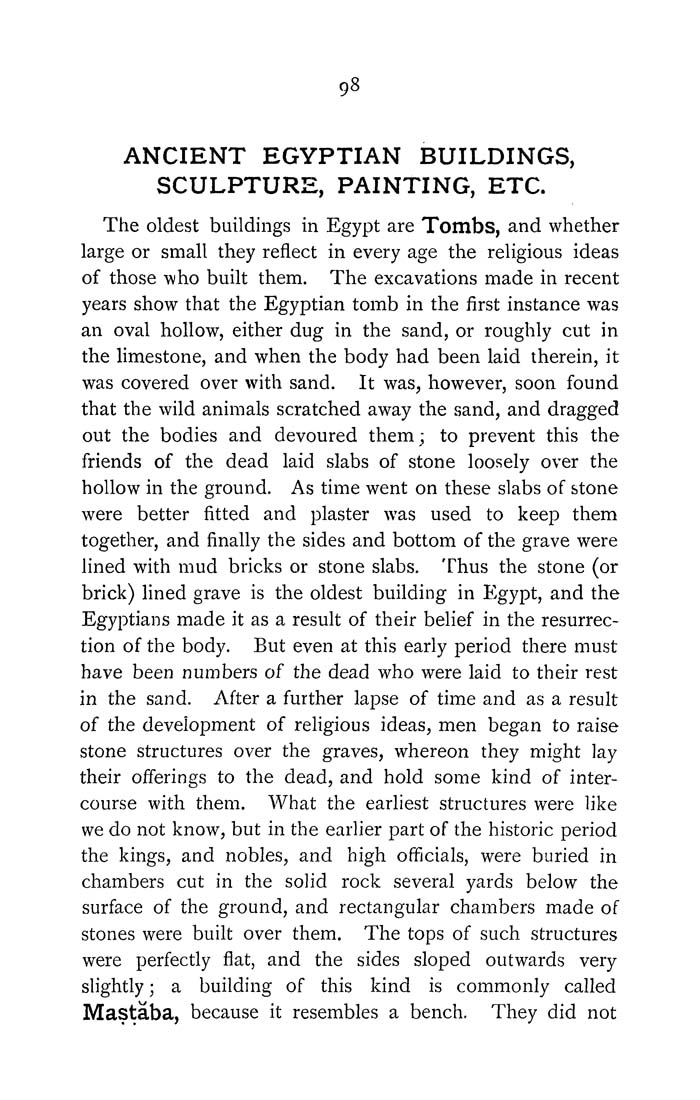98
ANCIENT EGYPTIAN BUILDINGS,
SCULPTURE, PAINTING, ETC.
The oldest buildings in Egypt are Tombs, and whether
large or small they reflect in every age the religious ideas
of those who built them. The excavations made in recent
years show that the Egyptian tomb in the first instance was
an oval hollow, either dug in the sand, or roughly cut in
the limestone, and when the body had been laid therein, it
was covered over with sand. It was, however, soon found
that the wild animals scratched away the sand, and dragged
out the bodies and devoured them; to prevent this the
friends of the dead laid slabs of stone loosely over the
hollow in the ground. As time went on these slabs of stone
were better fitted and plaster was used to keep them
together, and finally the sides and bottom of the grave were
lined with mud bricks or stone slabs. Thus the stone (or
brick) lined grave is the oldest building in Egypt, and the
Egyptians made it as a result of their belief in the resurrec¬
tion of the body. But even at this early period there must
have been numbers of the dead who were laid to their rest
in the sand. After a further lapse of time and as a result
of the development of religious ideas, men began to raise
stone structures over the graves, whereon they might lay
their offerings to the dead, and hold some kind of inter¬
course with them. What the earliest structures were like
we do not know, but in the earlier part of the historic period
the kings, and nobles, and high officials, were buried in
chambers cut in the solid rock several yards below the
surface of the ground, and rectangular chambers made of
stones were built over them. The tops of such structures
were perfectly flat, and the sides sloped outwards very
slightly; a building of this kind is commonly called
Mastaba, because it resembles a bench. They did not
|








